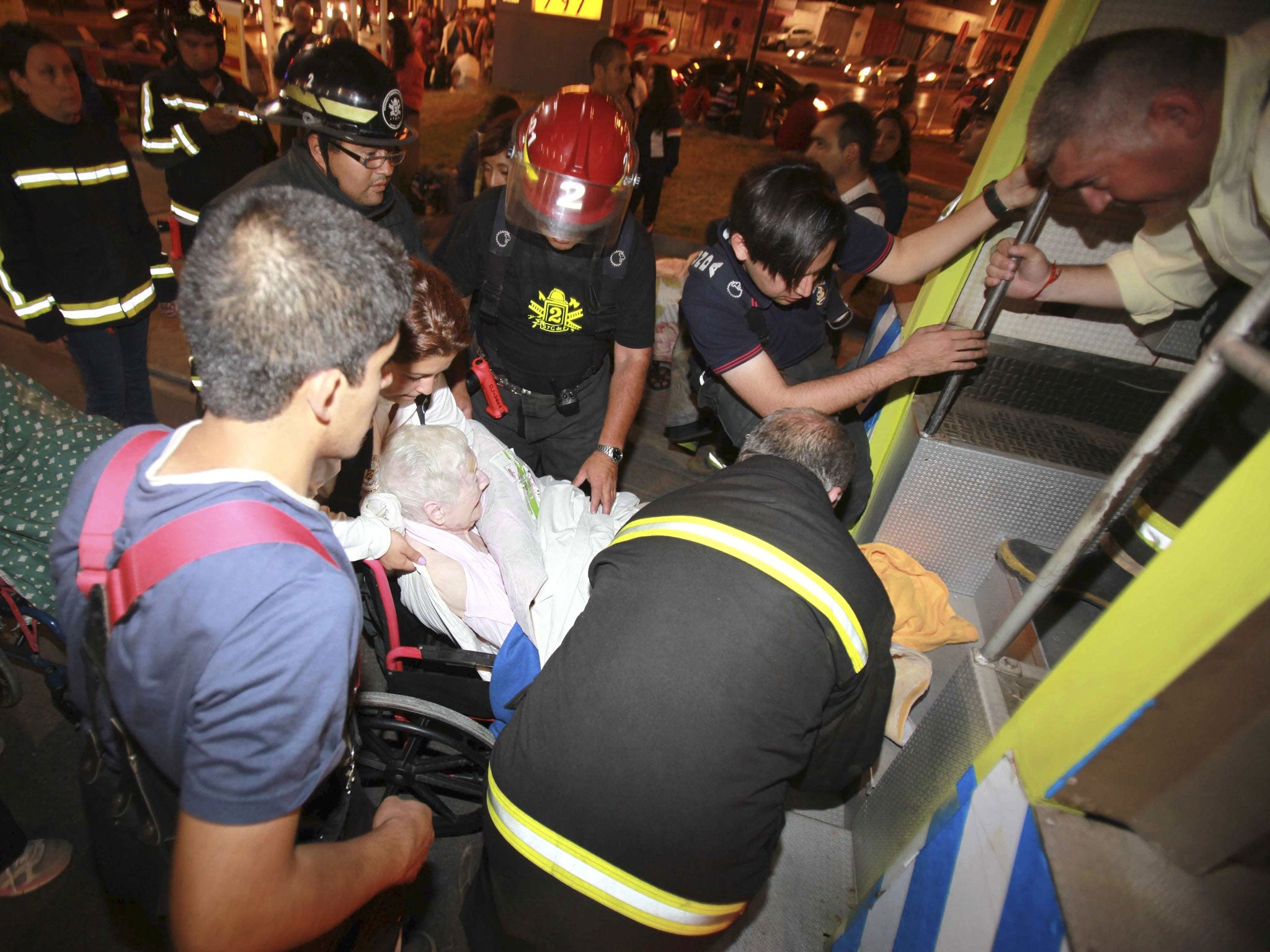Chile earthquake: Second tsunami warning after huge aftershock shakes country's northern coast
Region evacuated after 7.6 aftershock

Chile issued a tsunami warning for the second time in as many days after a powerful 7.6-magnitude aftershock hit the country's coast last night.
The tremor shock the same north-eastern region of the country in which six people were killed following an 8.2 magnitude earthquake the on Tuesday.
Chile's Emergency Office and navy issued a tsunami alert and ordered a precautionary evacuation of low-lying areas on the northern coast, meaning many people could be spending another sleepless night away from their homes.
The aftershock caused buildings to shake and people to run out into the streets in the port of Iquique, which was one of the cities that saw some damage from Tuesday night's big quake. But there were no immediate reports of new damage or injuries from the latest tremor, which was one of dozens that have followed the 8.2 quake.
“I was evacuated like all citizens. One can see that the people are prepared,” tweeted President Michelle Bachelet, who was in the nearby city of Arica to assess the damage.
The aftershock was centered 12 miles (19 kilometers) south of Iquique at a depth of 25 miles (40 kilometers), the US Geological Survey said. The USGS initially reported the tremor's magnitude at 7.8, but downgraded it to 7.6.
It was felt across the border in southern Peru, where people in the cities of Tacna and Arequipa reportedly fled buildings in fear.
On Tuesday, authorities reported just six deaths from the initial quake, but said it was possible others could have been killed in older structures made of adobe in remote communities that weren't immediately accessible.
In pictures: Disaster declared after huge earthquake in Chile
Show all 10About 2,500 homes were damaged in Alto Hospicio, a poor neighborhood in the hills above Iquique, a city of nearly 200,000 people whose coastal residents joined a mandatory evacuation ahead of a tsunami that rose to only 8 feet (2.5 meters). Iquique's fishermen poked through the aftermath: sunken and damaged boats that could cost millions of dollars to repair and replace.
Still, as President Michelle Bachelet deployed hundreds of anti-riot police and soldiers to prevent looting and round up escaped prisoners, it was clear that the loss of life and property could have been much worse.
The mandatory evacuation lasted for 10 hours in Iquique and Arica, the cities closest to the epicenter, and kept 900,000 people out of their homes along Chile's 2,500-mile (4,000 kilometer) coastline. The order to leave was spread through cellphone text messages and Twitter, and reinforced by blaring sirens in neighborhoods where people regularly practice earthquake drills.
But the system has its shortcomings: the government has yet to install tsunami warning sirens in parts of Arica, leaving authorities to shout orders by megaphone. And fewer than 15 per cent of Chileans have downloaded the smartphone application that can alert them to evacuation orders.
Chile is one of the world's most seismic countries and is particularly prone to tsunamis, because of the way the Nazca tectonic plate plunges beneath the South American plate, pushing the towering Andes cordillera ever higher.
AP
Subscribe to Independent Premium to bookmark this article
Want to bookmark your favourite articles and stories to read or reference later? Start your Independent Premium subscription today.

Join our commenting forum
Join thought-provoking conversations, follow other Independent readers and see their replies